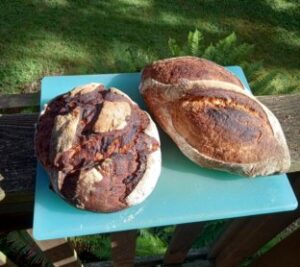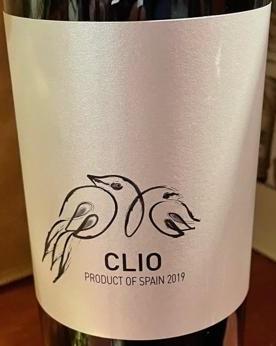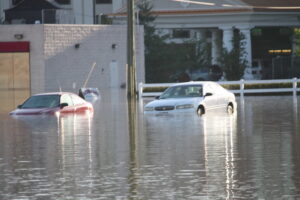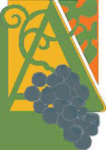lummi island wine tasting sept 1-2 ’23
Hours this weekend: Friday & Saturday, September 1-2, 4-6 pm
This week’s wine tasting:
J. Laurens Cremant de Limoux Rose France $16
A longtime favorite here at AWG–Chardonnay, Chenin Blanc, and Pinot Noir; shows a gentle yeastiness, effusive effervescence and rich, tangy, mouth-filling fruit. Makes just about anything Festive!
Montinore Borealis White Oregon $13
Aromas of orange blossom, honeydew, guava and kiwi; sumptuous flavors of stone fruit, Meyer lemon and juicy pear drizzled with caramel.
Chapoutier – Cotes-du-Rhone Belleruche Rouge ’21
Intense black currant and raspberry notes with hints of white pepper; juicy, lovely palate with silky, delicate tannins; good pairing for grilled meats, pizza, pasta, and and (someone says) especially lamb ragu!
El Nido Clio ’19 Spain $45
70% monastrell, 30% cabernet sauvignon; glass-coating opaque purple with an expressive nose of pain grille, underbrush, brier, mineral, blueberry, and blackberry fruit leading to a plush, opulent wine with great density, savory flavors, and a lengthy finish.
Friday Bread Pickup This Week

Breton – Incorporates the flavors of the french Brittany region. Bread flour and fresh milled buckwheat and rye make for interesting flavor and the salt is sel gris -the grey salt from the region that brings more mineral flavors to this bread. Goes great with meats and cheeses – $5/loaf
Four Seed Buttermilk – Includes all the elements of whole wheat, adding cracked wheat and bran in to the bread flour instead of milling whole wheat berries. It also has buttermilk and oil for a tender bread and a little tang, and finished with a bit of honey and sunflower, pumpkin, and sesame seeds and toasted millet $5/loaf
and pastry this week…
Rum Raisin Brioche: A delicious brioche dough full of eggs, butter and sugar. Filled with golden raisins and chunks of almond paste and (wait there’s more!) topped with a chocolate glaze before baking! – 2/$5
To get on the bread order list, click the “Contact Us” link above and fill out the form. Each week’s bread menu is sent to the list each Sunday, for ordering by Tuesday, for pickup on Friday. Simple, right..? If you will be visiting the island and would like to order bread for your visit, at least a week’s notice is recommended for pickup the following Friday.
Wine of the Week: El Nido Clio ’20 Spain $45
 Though we have had a few of these stashed in the cellar for some years, we rarely let ourselves drink one…it’s that…um...covetable.! It used to be very hard to get because of the high demand and low production. But on occasional nostalgic whim we order some, and this week it happened again, so you can all get to taste it this weekend!
Though we have had a few of these stashed in the cellar for some years, we rarely let ourselves drink one…it’s that…um...covetable.! It used to be very hard to get because of the high demand and low production. But on occasional nostalgic whim we order some, and this week it happened again, so you can all get to taste it this weekend!
Clio is a blend of 70% monastrell (known as mourvedre in France) and 30% cab sauv. Monastrell, a somewhat demanding grape to cultivate, has been developed to a high standard in the Murcia wine region in recent years. At the same time international demand for wine has also led to widespread planting of cabernet sauvignon in many parts of Spain, where it has thrived and developed its own Spanish footprint, which this wine showcases very well. Lucky for us…come on by and try it!
Economics of the Heart: Climate and Local Infrastructure
 Whew…after having been a bit over-focused on our local ferry financing for the last eight months or so, we are finally coming up for some much-needed air. During these months we have said relatively little about the relationship of our ferry issues to climate change; but actually it is a fairly central issue which these days most communities, including ours, increasingly find themselves forced to consider in most infrastructure investments.
Whew…after having been a bit over-focused on our local ferry financing for the last eight months or so, we are finally coming up for some much-needed air. During these months we have said relatively little about the relationship of our ferry issues to climate change; but actually it is a fairly central issue which these days most communities, including ours, increasingly find themselves forced to consider in most infrastructure investments.
A look at Google Maps makes it clear that the Gooseberry Pt. ferry landing is at the end of a peninsula on the mainland, about a mile, ten-minute passage from the Lummi Island landing. The east side of the peninsula extends into the southern estuary of the Nooksack River, while the west side of the peninsula forms Lummi Bay bordering the northern estuary.
Geologically speaking, the Gooseberry Pt. peninsula is also a sort of island, connected by a natural low bridge to the mainland which allows vehicle traffic most of the time. However, periodic flooding, super-high tides caused by combinations of high winds and full and new moon tides periodically cause road flooding that prevents vehicle traffic between the mainland and the G. Pt ferry dock.
Since these flooding episodes are expected to become more frequent and last longer over the next several decades, we should expect more frequent periods of days or even weeks when ferry service might require 8-mile trips to Bellingham, sharply diminishing the number of vehicles carried and the weather conditions under which service would even be possible.
For the foreseeable future, every public finance activity in every community is going to be increasingly impacted by climate change, with most of the financial burden falling on local, county, and state governments where most local infrastructure is built, operated, and maintained. These include roads and bridges, public transportation (ferries, buses, and trains), water supply, sewage treatment, and fire and emergency services. In recent years– and this year in particular so far– we have seen across the world atmospheric and ocean temperatures reach and maintain levels rarely seen by humans. As a friend memorably observed, “things are getting worse faster than we’re getting older!”
So not only are we hubris-driven human beings seeing damage getting worse and worse and the bills getting larger and more frequent from the accelerating climate impacts WE have wrought; we will also be bearing the ever-increasing expenses of rebuilding after each devastating hurricane, tidal surge, tornado, flood, heat wave, deluge, drought, and population displacement.
In earlier posts we have coined the term “economic uninhabitability” to describe the increasing number of geographic locations where changing local and regional climates are becoming too expensive to allow sustainable habitation or the large scale post-disaster reinvestment for their current populations. The emerging economic reality at many points on the Earth’s surface is that for at least the next several decades (assuming we work hard to turn the tide) it is becoming a fool’s errand to rebuild after a climate disaster without a solid likelihood the new structures will survive the increasing risks of record floods, fires, and high winds.
Many historically habitable subregions of the planet are becoming incapable of sustaining the local population in some places. In others rival communities must compete for increasingly scarce resources even to maintain the most basic subsistence. Such conditions are potential incubators of various forms of genocide, isolationism, and authoritarian minority rule. Dystopian conditions that were once the fictional hyperbole of post-apocalyptic sci-fit are now looming realities across the planet, and dire ones in the Third World.
Maintaining sustainable habitability in this era of rapid climate change will require a global commitment to preserving the ability of our planet to sustain cultivable land, adequate water, a livable climate, and a sustainable population.
We can all now see clearly that we have been both clever enough to survive and reproduce like rabbits for tens of thousands of years, and stupid enough to disrupt planetary cycles in ways that now pose an existential threat to the ability of our planet to continue to support life at all.
Maybe this is an appropriate time to ask ourselves as a species whether all the profits made by all the fossil fuel companies over the last century or so should be considered Social Benefits or Social Costs…
If you enjoyed this post, please consider to leave a comment or subscribe to the feed and get future articles delivered to your feed reader.

 2072 Granger Way
2072 Granger Way